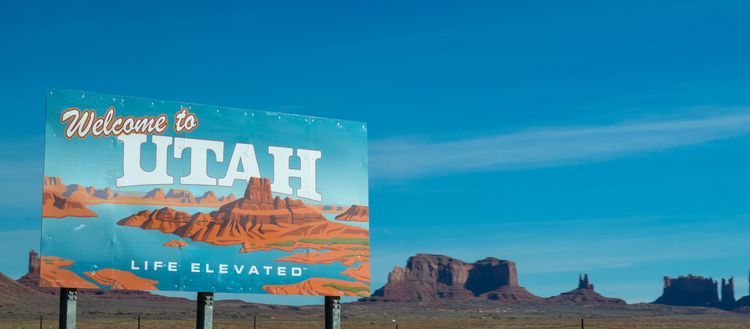
Inequality: The Immigration Dimension
By Steve Sailer
03/15/2000
Near Monument Valley, site of so many John Wayne westerns, the borders of Arizona, New Mexico, Utah, and Colorado come together at Four Corners. These adjoining states all share similar mountains and deserts. Yet the southern tier of Arizona and New Mexico displays practically Latin American levels of income inequality, while the northern tier of Utah and Colorado are almost Scandinavian in their economic egalitarianism.
The seldom-remarked links between economic equality (Liberals Like) and ethnic homogeneity (Liberals No Like) are made clear by the data displayed in a recent study (https://www.cbpp.org/1-18-00sfp.htm) by two left-of-center think tanks, the Economic Policy Institute and the Center on Budget and Policy Priorities. For all 50 states, they divided the average household income of the top 20% of the population to that of the bottom 20%. Utah is the most equal state in the union, with Colorado fifth. In contrast, Arizona and New Mexico are 48th and 49th.
Distance from Mexico appears to be the determining factor. According to Census Bureau projections for the year 2000, Hispanics make up about 29% of the combined population of the two states adjoining Mexico, versus only 12% of the two northern states. (Total minorities make up about 42% of Arizona and New Mexico’s population, versus only 19% of Utah and Colorado’s.)
And this pattern will only grow more distinct, since per capita legal immigration from Mexico to the two southerly states was running 165% higher than to their northern neighbors. (No estimate was available on illegal immigration, but Arizona has become notorious for the porousness of its border, as Pat Buchanan recently demonstrated by strolling back and forth across the Arizona-Mexico border unaccosted.)
This pattern of the whitest states being the most equal is seen across the land. The rest of the Egalitarian Top Twelve consists of Indiana, Iowa, North Dakota, Alaska, Maine, Wisconsin, Wyoming, Nebraska, Vermont, and Idaho. In pointed contrast, the most Brazilian states are primarily those with the most Hispanic immigrants. Besides Arizona and New Mexico, the most Latin American-like states include New York (50th most equal), California (46th), and Texas (44th). These immigrant destination states tend to be even more unequal than the Old South states with large numbers of rural blacks.
Apparently, states like New York, Arizona, California, and Texas are exacerbating their inequality both by importing poor foreigners and by impoverishing their underskilled, native-born citizens with more wage competition for the lousiest jobs.
Another way to look at this issue is to not worry about relative inequality, but to just consider the income of the lowest 20%. Personally, it’s fine with me if the rich get richer, but it’s the poor getting poorer part I’m not crazy about.
In the Four Corners states, the impact of ethnic diversity is obvious. The poorest poor in the country are in New Mexico, where the average income of the bottom fifth is only $8,700. The quite expensive state of Arizona, spiritual home of the $150 golf greens fee, has the eighth poorest poor people in America at $10,800. (But at least they make more than the bottom rung in immensely costly New York). In contrast, the wealthiest bottom fifth is in Colorado where they average $18,500 per year. Probably even more impressive, however, is the $18,200 average in Utah, since its cost of living is quite low.
Now, it’s important to note that the Hispanics of New Mexico are by no means all recent immigrants: the conquistadors founded Santa Fe in 1609. Their descendants have been part of the U.S. since 1848. And these Hispanics have exerted more political power and for longer than Hispanics in any other state. For example, one of the two statues representing New Mexico in the Capitol Rotunda is of a Hispanic grandee who served as U.S. Senator from New Mexico for much of the first half of the 20th century.
Nonetheless, the Mexican-Americans of New Mexico have yet to assimilate well. An Albuquerque rocket scientist asks, "Does this tell us anything about how likely Hispanics in general are to catch up academically and economically with people of North European descent? Yes, indeed. It never has to happen at all, and even if it does, it might take more than 150 years."
New Mexico’s population has increasingly split into an overclass of Santa Fe’s glitterati and Los Alamos' H-bomb designers, whose lawns are mowed and children baby-sat by a Mexican lowerclass, who are sullenly watched by an impoverished and alcoholic Native American underclass. It’s not a pretty sight, but it might be the future of the U.S., with native-born African-Americans playing the underclass role in most localities.
This obvious correlation between immigration and inequality is little remarked upon in the press, for various reasons. One big one is that polite society has decreed that since Equality and Diversity are both Good Things, they must therefore be synonyms rather than what they are: antonyms.
